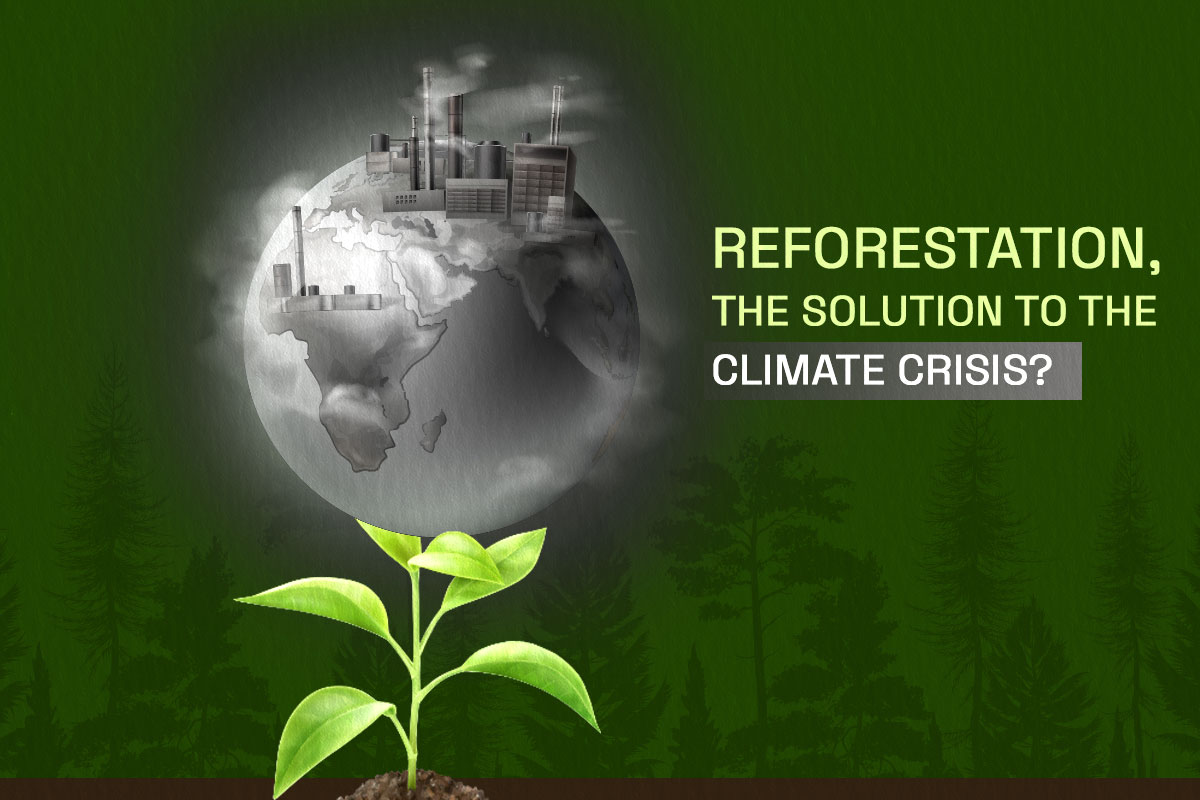Reforestation, the solution to the Climate Crisis?

Climate change has been one of the biggest concerns of recent times. Time and again we hear scientists alerting the world that we need to take immediate actions to slow down the fast rate at which we are approaching the disastrous and what currently seems inevitable climate crisis. However, did you know that the easiest and cheapest way to impede the climate crisis is right in front of us? (Well, at least in most cases, unless you live in the center of a concrete jungle.) The most applicable solution in today’s world is afforestation.
We have studied the importance of afforestation almost all of our school lives, but we barely understand how it can be practically implemented and can actually be utilized to fight one of the world’s major problems. Trees are a natural solution to the carbon dioxide emissions problems because of their function of capturing CO2 for photosynthesis. In recent research, it has been found that systematic tree planting across the globe can cut the carbon dioxide emissions that are present in the atmosphere currently by one-third. This figure has been deemed mind-blowing by many scientists because it makes tree-planting the most impactful solution.
Under the idea of a systematic tree-planting drive, it was attempted to find non-industrial and non-commercial areas where reforestation could occur. Research has been conducted to find out that 1.2 trillion native saplings can naturally grow on 1.7 billion hectares of land, which would mean 11% of all land globally. To provide more perspective, the area would be the size of the US and China combined.
It was an astounding and noteworthy piece of research because it proved that reforestation is the top solution that can be employed to prevent further degradation in terms of the climate crisis.
However, spoiler alert: it may not be as easy as it sounds. There have been significant steps taken to ensure reforestation, whether it be certain schemes in India or efforts taken in a politically divided USA, and these steps are notable. With that said, there are certain concerns that need to be considered. Even though there is great enthusiasm for tree-plantation drives, these projects need to be well designed, planned, and executed. Climatic, economic and political solutions need to be fetched which require deep levels of intricate planning.
Additionally, it has been a blind spot in all discussions that different types of trees store different levels of carbon dioxide. There has been more conversation about afforestation than building carbon-dioxide storing ecosystems. There also needs to be a serious discussion not only about planting saplings but also about how to keep the trees alive, how to avoid deforestation after the restoration process, and how to communicate with local communities and integrate them into the reforestation projects.
Another thing to majorly consider is that different trees grow in different habitats therefore making reforestation a trickier process. Urban and rural reforestation have been key areas of focus in the systematic approach of reforestation; however that approach would be futile if methods like financial incentives or live walls, solar trees or integration of forests with agroforestry are not well pursued.
Scientists also have the concern that the climate crisis is becoming an emergency at an alarming rate. At this point they believe that there needs to be more well-rounded approaches to cut down carbon emissions from the atmosphere. Contrary to that, many scientists state that while technologies are being created to convert carbon into fuel, reforestation is their first line of defense against the climate crisis. However, reforestation isn’t the solution to the sole yet massive problem of climate crisis. Reforestation will also help with negating natural disasters and reduce the probability of places and humanity facing endangering and life altering calamities in their lifetime. The noticeable rise in natural disasters which are arguably being termed human-invoked disasters will be reversed with reforestation. Additionally forests will ensure that the underground water level is maintained and well distributed. The presence of forests will continue to support the natural habitats of wildlife. Therefore, forests resolving the problem of climate crisis will inevitably help improve many other concerning situations.
While the solution isn’t as straightforward as it seems and needs a more nuanced approach, it is evident that reforestation might be our best bet against the climate crisis if executed correctly.
